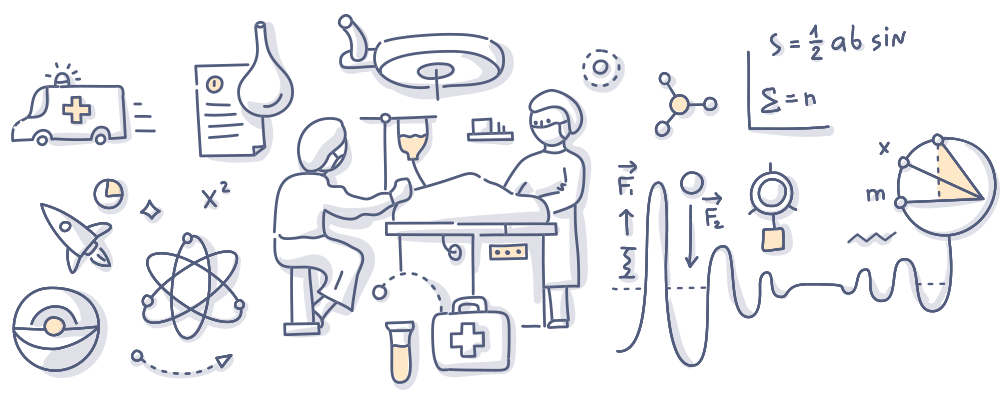Medical Necessity
Medical necessity is a cornerstone concept in the healthcare industry, shaping decisions, policies, and the provision of care. Understanding what medical necessity means and how it is determined is essential for healthcare providers, insurers, and patients alike. This comprehensive exploration delves into the definition of medical necessity, its guidelines, the role of medical algorithms, and the impact of advanced technologies such as AI, predictive analytics, and machine learning in healthcare.
What is Medical Necessity?
Medical necessity refers to the justification of medical services or procedures as essential based on clinical standards and patient needs. According to the American Medical Association (AMA), medical necessity is based on evidence-based clinical standards, the patient's medical condition, and the effectiveness of the service in achieving desired health outcomes. Medical necessity ensures that patients receive appropriate, efficient, and effective care.
In practical terms, when healthcare providers determine that a treatment or service is medically necessary, they assert that it is essential for diagnosing, treating, or preventing a medical condition. This determination influences what services are covered by insurance plans, which often rely on medical necessity guidelines to decide on coverage.
Medical Necessity Guidelines
Medical necessity guidelines are established criteria used to assess whether a particular service or treatment meets the standards of medical necessity. These guidelines can vary among insurers but generally include:
Clinical Evidence: Services must be supported by clinical research and scientific evidence demonstrating their effectiveness.
Patient-Centered Criteria: The service must be appropriate for the specific patient's condition, considering their health status, medical history, and prognosis.
Cost-Effectiveness: The service should provide a reasonable benefit compared to alternative treatments, considering cost-effectiveness.
Professional Standards: Services should align with professional standards and practices established by reputable medical organizations.
Medical necessity according to the AMA emphasizes these guidelines to ensure consistent and fair evaluations of medical services.
How to Prove Medical Necessity
Proving medical necessity involves demonstrating that a particular service is essential for a patient's health. Healthcare providers must document the patient's condition, the rationale for the service, and how it meets established medical necessity criteria. This documentation often includes:
Patient Medical Records: Detailed records of the patient's medical history, symptoms, diagnoses, and previous treatments.
Clinical Evidence: Research studies, clinical trials, and medical literature supporting the efficacy of the treatment.
Provider's Clinical Judgment: The healthcare provider's assessment and reasoning, based on their professional expertise and experience.
Proper documentation is crucial for insurance claims and for ensuring patients receive the care they need without unnecessary delays.
Medical Necessity in Coding
In healthcare coding, medical necessity plays a critical role in determining the correct codes for billing purposes. Coders must accurately translate the medical necessity of services into standardized codes, such as ICD-10 (International Classification of Diseases, 10th Revision) and CPT (Current Procedural Terminology) codes.
Understanding what is medical necessity in coding helps ensure that services are appropriately billed and reimbursed. Coders must be knowledgeable about medical necessity guidelines and the clinical documentation supporting the services provided.
Advanced Technologies in Proving Medical Necessity
The advent of advanced technologies, such as Artificial Intelligence (AI), Predictive Analytics, and Machine Learning, has reshaped the healthcare industry. These technologies enhance the ability to determine and prove medical necessity more accurately and efficiently.
AI in Healthcare: AI algorithms analyze vast amounts of data to identify patterns and predict patient outcomes. AI can assist in determining medical necessity by providing evidence-based recommendations and identifying the most effective treatments for individual patients.
HCC Coding Software: Hierarchical Condition Category (HCC) coding software uses predictive modeling to assess patient risk and ensure accurate coding. This software supports medical necessity determinations by aligning coding practices with patient risk profiles and clinical guidelines.
Predictive Analytics in Healthcare: Predictive analytics uses historical and real-time data to forecast future health events and outcomes. In medical necessity assessments, predictive analytics can identify patients who would benefit most from specific interventions, thereby supporting more precise and effective care decisions.
Healthcare Machine Learning: Machine learning algorithms continuously learn from data to improve their predictions and recommendations. In medical necessity, machine learning can enhance diagnostic accuracy and treatment planning by analyzing complex data sets and identifying subtle patterns that may not be evident through traditional methods.
Natural Language Processing in Healthcare: Natural Language Processing (NLP) technology processes and understands human language in clinical documentation. NLP can extract relevant information from patient records to support medical necessity determinations, ensuring that all necessary data is considered in the decision-making process.
Computer-Assisted Coding (CAC): CAC systems automate the coding process by analyzing clinical documentation and suggesting appropriate codes. CAC enhances accuracy and efficiency in coding for medical necessity, reducing the risk of errors and ensuring that services are correctly billed.
Medical Algorithms: Medical algorithms are step-by-step procedures for diagnosing and treating medical conditions. These algorithms are based on clinical guidelines and best practices, helping providers make evidence-based decisions about medical necessity.
The Role of Medical Necessity in Health Policy and Insurance
Medical necessity is a critical factor in health policy and insurance coverage decisions. Insurers use medical necessity guidelines to determine which services and treatments they will cover. These guidelines help control healthcare costs by ensuring that only necessary and effective services are reimbursed.
However, the interpretation of medical necessity can vary among insurers, leading to potential discrepancies and disputes. Providers and patients must navigate these variations to secure coverage for necessary services.
Challenges and Opportunities in Defining Medical Necessity
Defining and proving medical necessity can be challenging due to the complexity of medical conditions and the variability in clinical practices. Some of the key challenges include:
Subjectivity: Medical necessity determinations can be subjective, influenced by individual provider judgments and patient preferences.
Evolving Standards: Medical standards and guidelines evolve over time, requiring continuous updates to medical necessity criteria.
Documentation Burden: Proving medical necessity requires extensive documentation, which can be time-consuming for providers.
Despite these challenges, there are significant opportunities to improve medical necessity assessments through technology and collaboration:
Standardization: Developing standardized medical necessity criteria and guidelines can reduce variability and improve consistency in assessments.
Technology Integration: Leveraging advanced technologies, such as AI, predictive analytics, and machine learning, can enhance the accuracy and efficiency of medical necessity determinations.
Collaborative Approaches: Collaboration among providers, insurers, and patients can facilitate better understanding and alignment on medical necessity criteria and processes.
Moving Forward
Medical necessity is a fundamental concept in healthcare, guiding the provision of care and influencing insurance coverage decisions. Understanding what is medical necessity and how it is determined is crucial for ensuring that patients receive appropriate and effective care.
Advanced technologies, including AI, predictive analytics, and machine learning, are reshaping the landscape of medical necessity assessments, offering new tools and capabilities to enhance accuracy and efficiency. As the healthcare industry continues to evolve, these technologies will play an increasingly important role in shaping the future of medical necessity and healthcare delivery.
By embracing these innovations and striving for standardized, evidence-based approaches, healthcare providers and insurers can better navigate the complexities of medical necessity, ultimately improving patient outcomes and the overall quality of care.
ForeSee Medical software helps your organization perfect your RAF scores and improve HCC coding productivity five to 10-fold. Our disease detection algorithms and machine learned natural language processing rationalize your patient data across the healthcare system. It’s simple, using artificial intelligence (AI) we discover diseases from text notes and EHR data you already have. Then, we empower you with insightful HCC risk adjustment support, at the point of care, and integrated seamlessly with your EHR.






